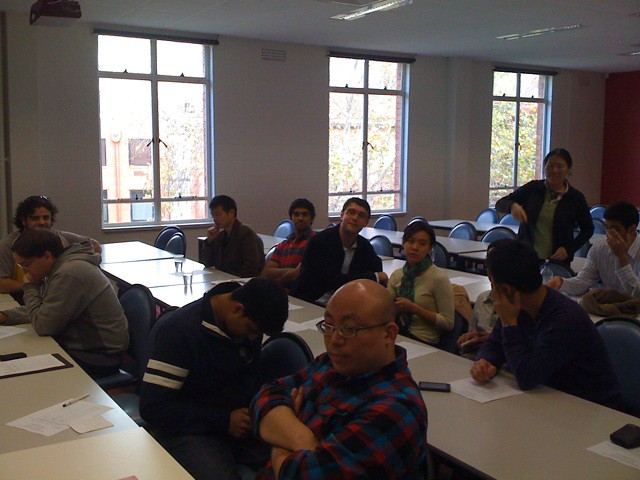I am neither the most popular and nor the best presenter according to the judges, but I can still present at the Engineering, Computer Science and Maths heats for a spot in the University wide 3MT round. I was the 1st runner's up with my spill on the penguins. Here is the text as it was first written, what came out of my mouth at the presentation I don't know myself.
If you have seen happy feet you may think that all penguins live on ice, but this is not the case. These royal penguins live on the rocky and muddy shores of Macquarie island in the sub-antarctic which is administered by Tasmania. Apart from the penguins there are 20 to 40 scientists from Australian Antarctic Division and about 100,000 rabbits. Rabbits were introduced by the whalers in the 17th century. These rabbits eat all the vegetation on the steep slopes leaving the penguin rookeries vulnerable to landslides. The harsh terrain and harsher climate of the island makes it difficult to monitor the vegetation on foot. So the scientists turned to satellite imaging. These days everybody is familiar with satellite imagery from Google Earth, they indeed used Quickbird for a stunning image in 2007. In 2008 and 2009 however the optical sensor failed to deliver and all the images were cloudy, so the Antarctic division asked me to have a look using Synthetic Aperture Radar, TerraSAR-X. which is basically like a camera with a microwave flash which can operate at night and goes through clouds. So we had a perfect cloud free image, but like with X-ray which goes through flesh to let you see bones, the radar goes through clouds to give you a microwave view of the vegetation. Without special training people find it hard to interpret radar images. Newton said “If I have seen further it is by standing on the shoulders of giants”, I am seeing into radar by standing on shoulders on the statistics and electromagnetics giants – Gauss and Maxwell in this case. In fact on a pyramid of giants who have developed radar theory to the state it is today. My research has successfully identified the different vegetation types and the bare areas, as well as the biomass and height. The Antarctic division is planning to use this technique to track the progress of the 25 million dollar rabbit eradication program and vegetation re-establishment. My work has also been used to predict yields in various crops, such as canola and to identify cleared land in rainforests. Development of these techniques has a huge impact on how we see the vegetation covering the world.

Great post, nice layman description of SAR.
ReplyDelete